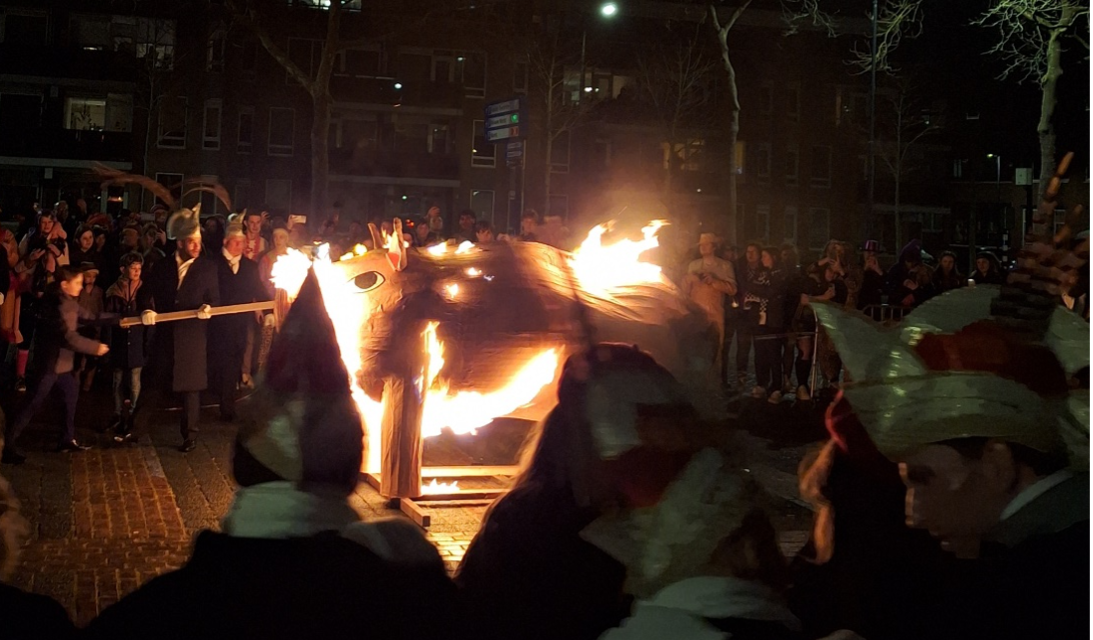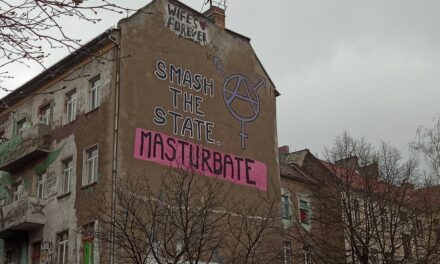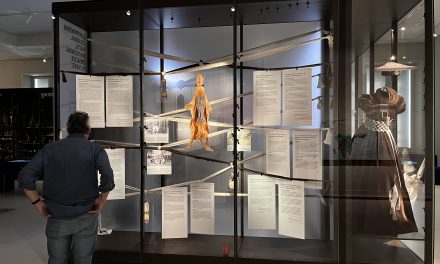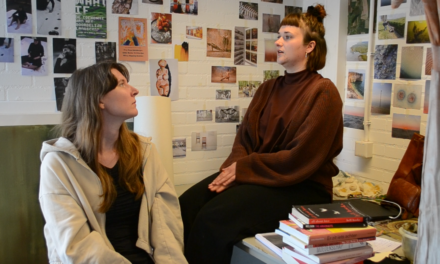Carnaval, originally a catholic party preluding the 40-day fasting period lasting until easter. The party is mainly celebrated in the southern parts of the Netherlands, which is also where its roots lay. The cities celebrating Carnaval also has its traditions along with the city of Uden. The city has found a way to combine history with the festivities, while still honouring the old ways. However, the ever-growing party of Carnaval for the rest of the Netherlands and the changing expectations of new generations could impact how these traditions continue.
In the earlier days, Uden’s market was primarily focused on the trade of pigs. “A large market hall was built in the city centre and farmers from all across the region would come to sell and buy pigs this was then called the Baggemért” shared Erik Hendriks, lifetime resident of Uden and member of the organisation of the Caranval’s Baggemért. In Uden a pig used to be called a ‘knoeris’ which is also the origin behind the carnavals association’s name; the knoerissen. The association was set up in the 60s, every year since then the mayor “gives away the city” by handing over the key at the start of carnaval to the prince of the year. On the last day of the festivities, a knoeris (pig) built from wood and paper by volunteers is ritually burned, and the key is handed back over to the mayor as a finalisation of the Carnaval season.
“Traditions are traditions, and have a sort of nostalgia to them. They need to be kept and don’t change very strongly” Hendriks said when asked about the changes within the traditional activities. While traditions such as handing over the key and the burning of the knoeris have stayed as is, the Baggemért however has been through a shift. The carnaval’s Baggemért is an event in honour of the actual trading of the pigs.

Erik Hendriks with Baggepongen at the Baggemért
The Baggemért used to have old crafts such as the making of clogs. These were used to be kept running by elderly people. However, slowly these crafts start to disappear due to the lack of people who are still able to perform these crafts. Due to this, the festivities are starting to become a bit more superficial, Hendriks noticed. Furthermore, the Baggemért used to symbolically trade real pigs in the first few years in remembrance of the old days. The current Baggemért still has a tight program with old games and traditions such as rope braiding, baggepongen (beerpong), rikken (a typical Brabant and Limburg’s card game), blaaskapellen, and other ludic shows. It is a continuous program led by the ‘mertmister’ (market master) and 4 other traditionally clothed committee members. The Baggemért attracts a lot of people, mostly parents with their kids, and friends of the organisation as well as elders who have been attending for more than 30 years. There is, however, one group of people who haven’t been attending the Baggemért as much as others, students. The organisation has been trying to figure out new ways to attract the youth to come to the Baggemért, for instance, this year the organisation tried to attract the youth by setting up an electronic pig. However, since the Baggemért is during the day on Monday, and a lot of the café’s host programs for the youth, which makes it less attractive for them to attend.
The local community plays a big role in the celebration of Carnaval. ‘’Without the local community, the association wouldn’t exist.” The association visits a lot of organisations and companies to keep people involved. However, by keeping the community involved, the needs have shifted. “Carts are becoming smaller, the youth have more possibilities to go out and with that less time to volunteer, and participants just want to celebrate” Hendriks noticed.
Traditions can only be kept by organising activities around those traditions that align with the needs and expectations of the public. Even with the growth of Carnaval among people from ‘above the rivers’ this will continue to be the case. “While big cities such as ‘S-Hertogenbosch (Oeteldonk) and Eindhoven (Lampegat) will notice the biggest changes, the traditions in Uden are from the people from here, and they will continue to be exactly that” Erik finally shared.




